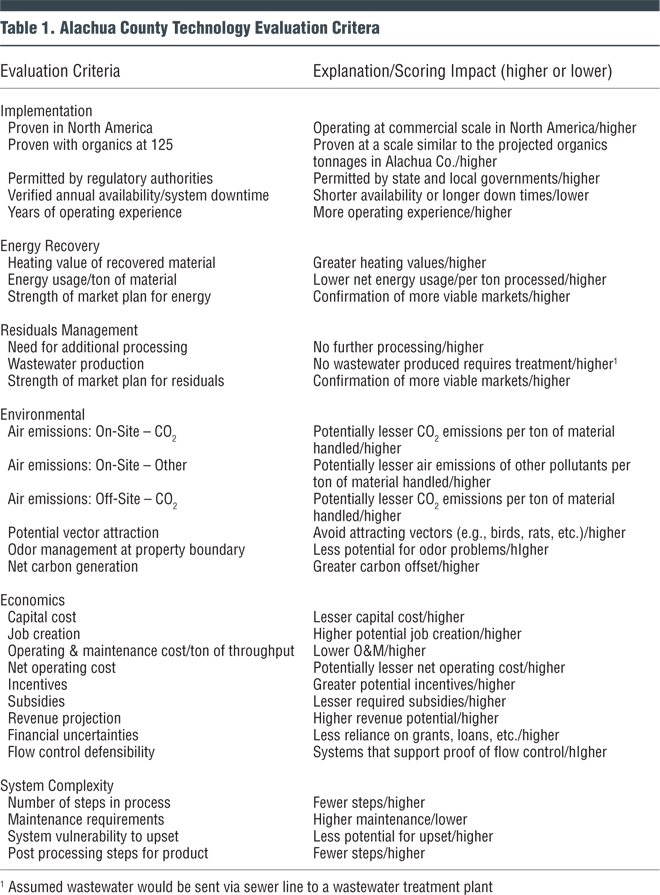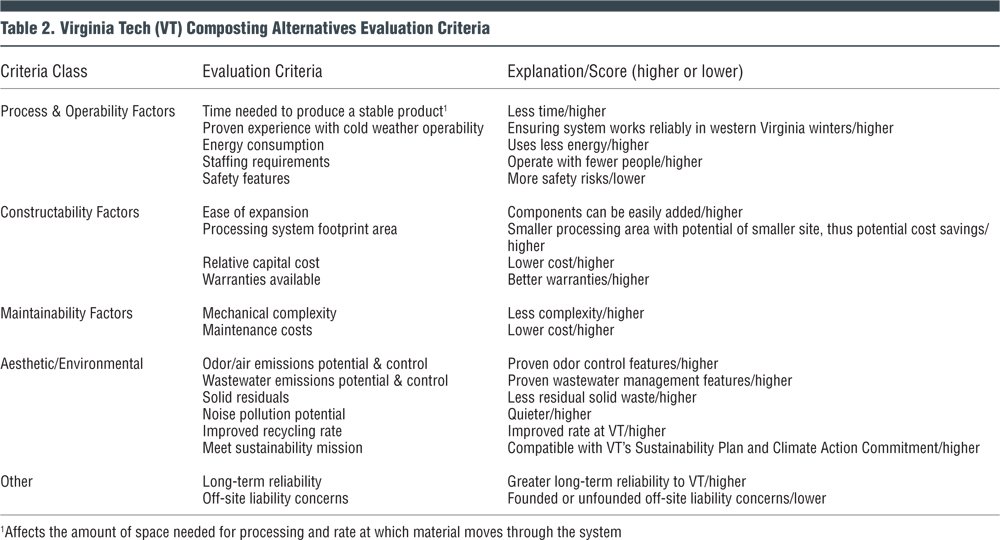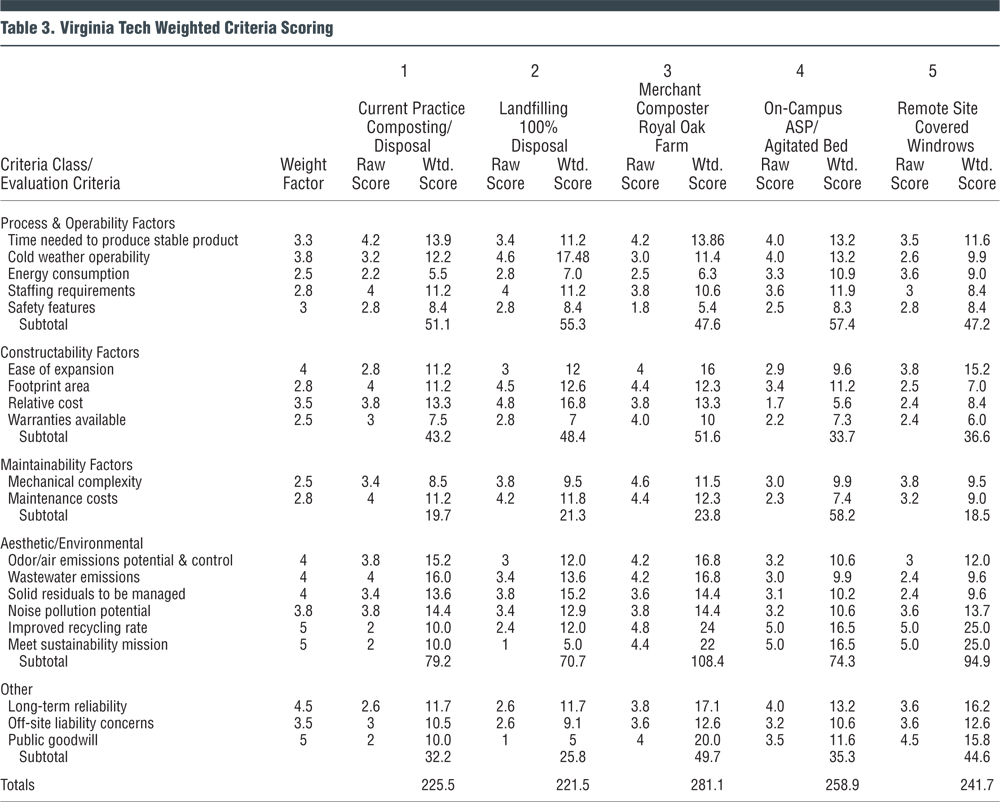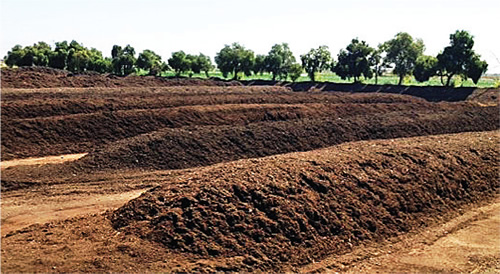Noneconomic factors of importance include proven performance at an appropriate scale, and environmental and socioeconomic impacts. In Part I, net present value factors were reviewed. Part II
Craig Coker
BioCycle January 2016
When developing or modifying organics recycling facilities numerous alternatives must be evaluated, including sites, construction materials, equipment makes and models — and even whether to establish a new operation or utilize off-site merchant composting or digestion services. Part I of this article series (see “Economic Tool To Evaluate Organics Recycling Options, December 2015) looked at alternatives evaluation using an economic analysis method known as Net Present Value (NPV). However, there are usually noneconomic factors to consider as well in decisions about organics recycling programs, facilities and equipment. These include proven performance at an appropriate scale, environmental impacts, carbon footprint, socioeconomic effects, site impacts to historical and archaeological resources and many more. Alternatives can be compared and evaluated for these noneconomic factors using a Multi-Criteria Decision Analysis technique known as the Weighted Criteria Matrix Technique.
The weighted criteria matrix is a decision-making tool to evaluate alternatives based on specific criteria weighted by the importance of each criterion. Each alternative is scored against each evaluation criterion on a scale of 1 to 5, where 1 means the alternative did not meet the criterion well, 3 means it met it fairly well and 5 means the alternative met the criterion very well. For example, if buying an automobile, one evaluation criterion might be fuel economy. An alternative vehicle with an estimated fuel economy of 36 miles per gallon (mpg) would score around 4 or 5 (decimal scores, e.g., 4.3, are possible with this methodology) while one with an estimated fuel economy of 19 mpg would score around 1 or 2. This scoring methodology is inherently subjective for most criteria and is heavily dependent on the accuracy of the information supplied for this process.
The score of each alternative against each evaluation criteria (known as the “raw score”) is then multiplied by the weighting factor for that criterion. Weighting factors are also assigned on a scale of 1 to 5, where 1 means the criterion is not important at all, 3 means it is of medium importance and 5 means the evaluation criterion is extremely important. Different stakeholders assigning weighting factors may have different perspectives on importance, so differing weighting factors are averaged before applying them to the evaluation criteria. For example, a family of four considering buying a new car might give “engine horsepower” weighting factor scores of 3.5, 2.5, 4.8 and 3.9. The average weighting factor for that evaluation criterion would be 3.675.
The stakeholder-average weighting factors are multiplied by the raw scores for each evaluation criterion to arrive at a weighted score for each, which are then summed for each alternative to arrive at a total weighted score for each. The alternative with the highest weighted score is the suggested alternative.
By evaluating alternatives based on their performance with respect to individual criteria, a value for the alternative can be identified. The values for each alternative are then compared to create a rank order of their performance related to the criteria as a whole. This tool is important because it treats the criteria independently, helping avoid the over-influence or emphasis on specific individual criteria. The evaluation criteria should be developed by the analyst, with input from stakeholders. The importance that weighting factors should be assigned is decided by more senior stakeholders.
Evaluation criteria can be as broad or as detailed as stakeholders wish. One drawback to extensive detailed evaluation criteria is the difficulty of securing adequate and valid information on each criterion for each alternative in order to assign a numerical score.
Alachua County, Florida
The Alachua County (FL) Department of Public Works is using this technique to help evaluate alternatives for organics recycling. The Board of County Commissioners wants to identify appropriate technologies to consider in its evaluation of options for an Organics Recycling Facility (ORF). An ORF is a necessary component of the Alachua County solid waste infrastructure to meet the desired Florida Year 2020 goal of a 75 percent recycling rate.
The evaluation has focused on technologies that involve extracting a recovered energy component out of the residuals to be produced by the county’s proposed mixed waste materials recovery facility, or on technologies that recover a resource. Anaerobic digestion, gasification, composting (alone and with heat recovery) and production/combustion of refuse-derived fuel are among the technologies being evaluated. “The County is considering going out with a Request For Proposals in early 2016,” notes Scott Karwan, project manager with Locklear & Associates, the prime contractor on a team including the author and Dvirtka and Bartilucci Consulting Engineers. “A large number of stakeholders want to have a role in what technology the County selects, so we wanted to use the Weighted Criteria Matrix approach to help everyone evaluate alternatives independently but consistently.”
The project team developed six criteria categories, each with specific items to be weighted. County staff, elected officials and stakeholders had to consider and assign weighting factors to each item.
The six categories, factors to be weighted and assigned scoring are shown in Table 1.
Virginia Tech
Part I discussed a feasibility study of on-campus and off-campus composting options at Virginia Polytechnic Institute and State University (Virginia Tech) in Blacksburg, Virginia. In addition to the economic considerations of the alternatives presented in Part I, the project team and Virginia Tech staff examined noneconomic alternatives using the Weighted Criteria Matrix technique.
The selection criteria developed by the project team (including this author) are shown in Table 2. The weighting factors assigned by Virginia Tech staff and the resulting scorings are shown in Table 3. For the Virginia Tech evaluation of alternatives, the alternative involving 100 percent diversion to an outside merchant composter was considered a better alternative, on noneconomic bases, than the other alternatives, which were: Continue with current program of partial diversion, 100 percent landfilling, or on-campus composting using various approaches.
The Weighted Criteria Matrix decision-making technique allows inputs from multiple stakeholders to be considered. It is an independent method of evaluation even if the criteria scores are somewhat subjective and it is relatively easy to understand. Making decisions among alternatives in organics recycling is never easy, yet techniques like Weighted Criteria Matrix can simplify the process.
Craig Coker is a Senior Editor at BioCycle and a Principal in the firm Coker Composting & Consulting (www.cokercompost.com), near Roanoke, Virginia.
















